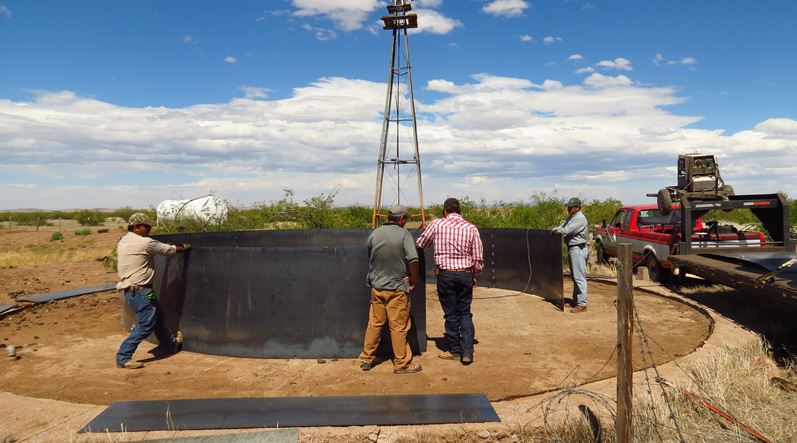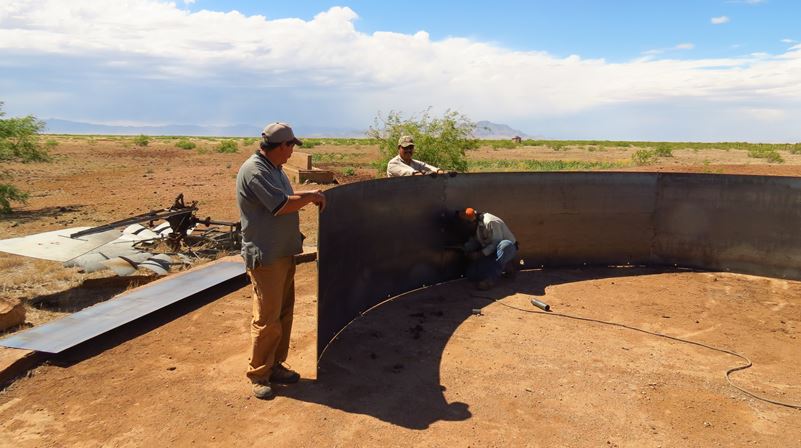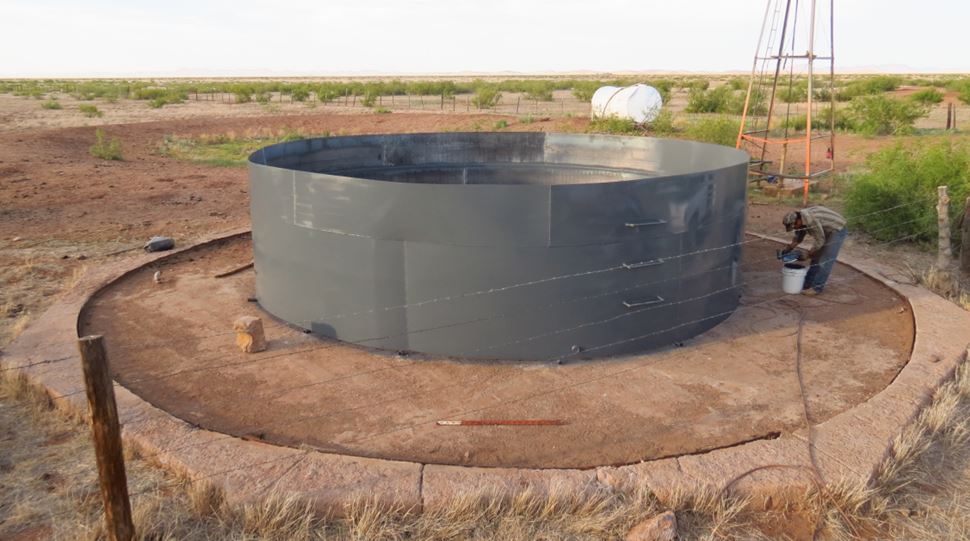| Type | CEC-support Ranch Pilot |
| Organization | Rancho El Uno |
| Country | Mexico |
| Region | Janos Grasslands, Municipality of Janos, Chihuahua |
| Grass Type | Open grassland and halophyte grassland, with mesquite brush associations and prairie dog colonies |
| # of head of cattle | Not available. Custom grazing operation. |
| Hectares | 18,500 |
| Language | Spanish |
| Date modified | August 2015 |
The El Uno Ecological Reserve, better known as Rancho El Uno, belongs to The Nature Conservancy NGO. The main purpose of the ranch is the conservation of grasslands and their biodiversity through the teaching and application of good stockbreeding management and grassland restoration practices. It also functions as an experimental plot for the ecology and biology of wildlife, its habitats and the application of grassland management tools. In its capacity as a grassland conservation center, the ranch has invested funds from various sources of financing, including the Commission for Environmental Cooperation (CEC), the National Commission for Protected Natural Areas (Conanp), the National Forestry Institute, Farming and Animal Husbandry Research Institute (INIFAP), the Rio Grande Joint Venture, World Wide Fund for Nature, and the US Forest Service. Activities focus on research, producer training, design and equipment for grazing approaches, specific habitat improvement, and improving the structure of the grassland landscape.
El Uno is located in the Janos Grasslands, a region to the northwest of the Chihuahuan Desert in Mexico. Located, more specifically in the middle of the Janos Valley and surrounded by farmland, the ranch is one of the last open grassland zones in the Chihuahuan Desert.
The principal stockbreeding activity at El Uno is a conservation approach called grass banking, which enables the training of communal farmers and cattle ranches in better grassland and cattle management practices. The producer signs a contract with the ranch for a period of about three years to use the paddocks to graze his cattle. Grazing is managed according to the technical instructions of El Uno and its partners (RMBO, IMC Vida Silvestre, UNAM, UACH, LIVES Savory Hub). While the herds in question graze on El Uno, grassland improvement and restoration actions are taken on the grasslands of the participating communal farms or ranches. The objective is that, by the end of the contract, the rancher will have learned better approaches to cattle raising, in terms of grazing, sustainability, profitability and, besides, supports conservation of the grasslands and its biodiversity. Currently, three different groups participate in the El Uno program: 1) Ejido de Casa de Janos, with rotational grazing of 200 head on 3,000 hectares; 2) Ejido San Pedro, with a rotational grazing system that includes 165 head of cattle on 1,800 hectares; and 3) Rancho San Pedro, with 500 head on 4,000 hectares. Another 1,400 hectares were made available for a herd of 50 free-range bison.
Three people—ranch administrator Antonio Esquer; general technical manager José Luis García, and facility and logistics manager Dalia Campos—coordinate all activities of the ranch and of the partners and collaborators from The Nature Conservancy in Janos.
The region where El Uno is located is of international importance in terms of the conservation of grasslands and their biodiversity. The ranch’s grasslands are an essential winter habitat for most grassland birds of common interest, such as the chestnut-collared longspur (Calcarius ornatus), Sprague’s pipit (Anthus spragueii), Baird’s sparrow (Ammodramus bairdii), the grasshopper sparrow (Ammodramus savannarum), Swainson’s hawk (Buteo swainsoni), the ferruginous hawk (Buteo regalis), the prairie falcon (Falco mexicanus), the merlin (Falco columbarius) and the peregrine falcon (Falco peregrinus). The ranch is also a habitat for the golden eagle (Aquila chrysaetos) and can be for the aplomado falcon (Falco femoralis). Six prairie dog colonies run across Rancho El Uno (Cynomys ludovicianus), which are also sites of concentration of other species related to these rodents, such as the rattlesnake (Crotalus atrox), the badger (Taxidea taxus), the kit fox (Vulpes macrotis) and the lynx (Lynx rufus), to name a few.
The loss of perennial grasses, the invasion of shrubs (mesquite and cholla), wind erosion, and the invasive expansion of weeds such as Russian thistle (Salsola iberica) are the main threats to grasslands at El Uno.
Direct management activities have included the installation of a 50,000-liter basin financed by the CEC, which stores water for four paddocks, the placement of a water basin escape ramp to prevent birds from drowning, the installation of artificial nests for the aplomado falcon, the management of 130 hectares of mesquite and the installation of stockbreeding infrastructure to support better management practices, such as two 6,000-liter troughs, a 40,000-liter basin, 2.6 kilometers of tubing, and electric fencing at paddock dividers.
Key results of the actions at Rancho El Uno include collaboration agreements for the conservation of 2,400 hectares of open grasslands and the training of producers from two communal farms and one cattle ranch.


